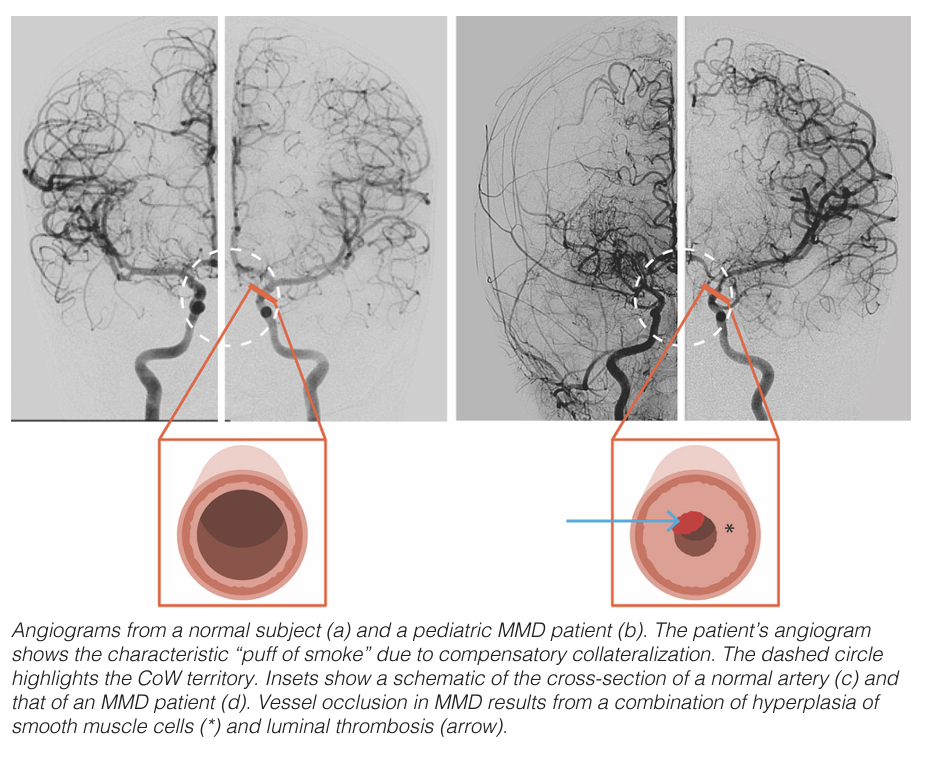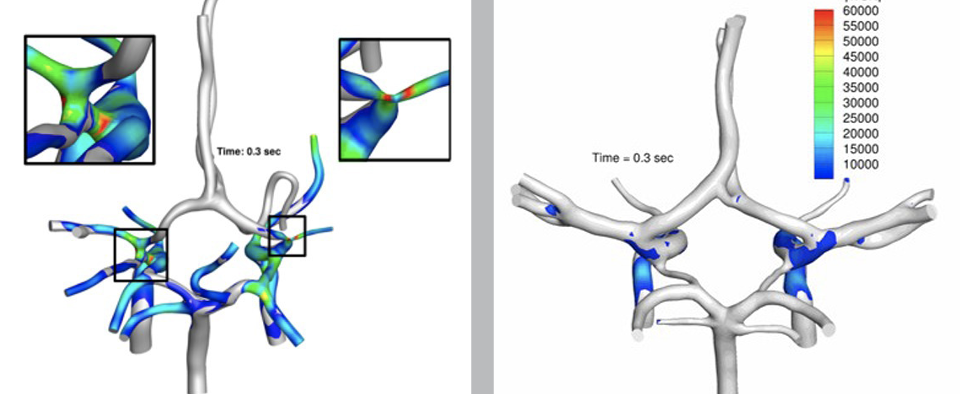Moyamoya Disease
"Angiograms of a normal pediatric brain and the brain of a patient with Moyamoya Disease with a characteristic vessel that look like a “puff of smoke” due to compensatory collateralization. The dashed circle highlights the circle of Willis territory. Insets show a schematic of the cross-section of a normal artery and vessel occlusion." – Shaolin S. Hossain, PhD Assistant Investigator

In an NIH-supported collaborative project with Texas Children’s Hospital and the University of Texas Health Science Center Houston, an image-based computational modeling toolset was developed to noninvasively assess stroke risk in pediatric patients suffering from moyamoya disease, a cerebrovascular condition that causes narrowing of the arteries that supply the brain, leading to recurring ischemic and hemorrhagic strokes.
By using the imaging data from a patient that had suffered a right-sided stroke, blood flow was simulated in the circle of Willis, a branch point that distributes oxygenated blood throughout the brain. This modeling illuminated several mechanisms that led to a subsequent left-sided stroke and that could be a predictor of future stroke. Ideally, such patient-specific biosystems modeling could be used to help ensure that patients at risk of recurrent stroke are properly followed up and treated before strokes occur. The study was published in Biomechanics and Modeling in Mechanobiology.

Explore our new Digital Annual Report or read the report in a Flipbook or Mobile/Tablet view.





